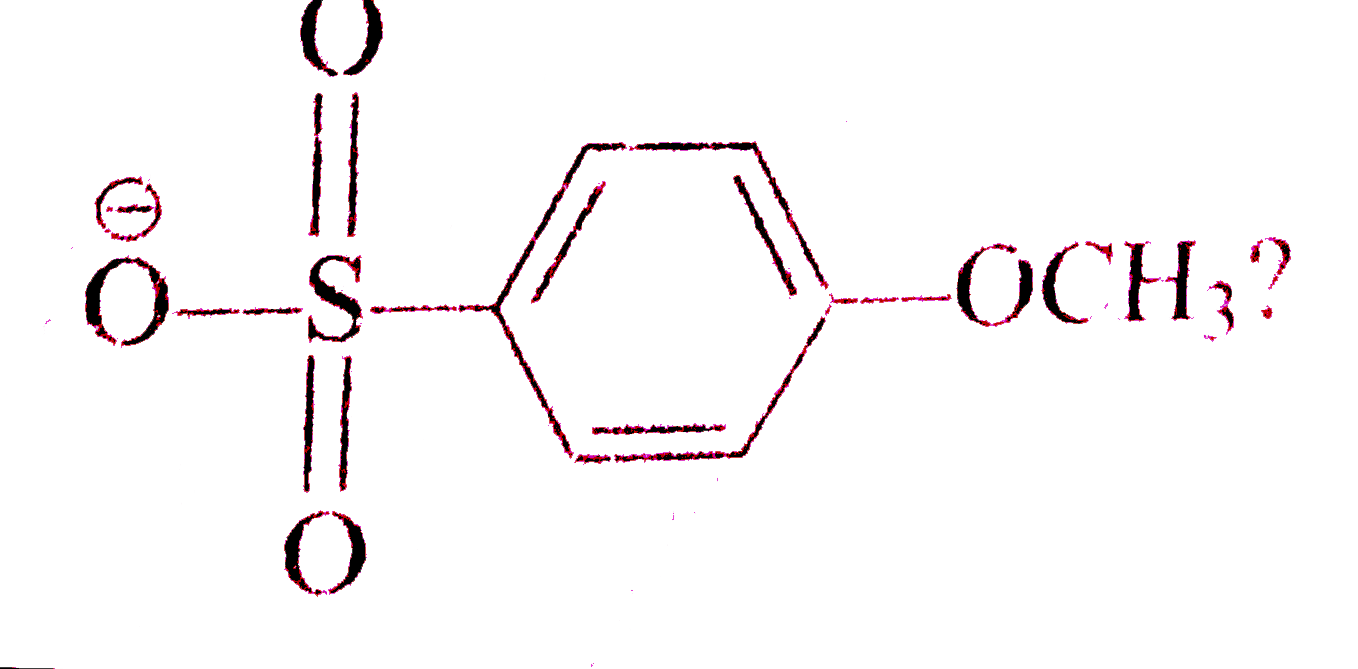The leaving group is that functional group which is ejected with ¯e,s of the σ -bond in a reaction. Better the leaving group, faster is the reaction. The relative leaving ability of the leaving group X in (R−X) is increased by :
(i) The polarisability of (R−X) bond.
(ii) The stability of XӨ.
(iii) The degree of stabilisation through solvation of X.
(iv) The strength of (R−X) bond.
The leaving group tendency is also called fugacity.
Which of the following is the wrong order of fugacity ?
SbH3>AsH3>PH3>NH3
FӨ>ӨOH>ӨNH2>ӨCH3
NH3>NH2−NH2>MeNH−NH−Me>Me2N−Nme2
CӨN>ӨOH>MeO>ӨCH3.
The correct Answer is:D
Acidic order : HCN>MeOH>H2O>CH4
Basic order : ӨCH<MeCӨ<ӨH<ӨCH3
Weaker the base, better is the leaving group.
Fugacity order : ӨCN>MeOӨ>ӨOH>ӨCH3.
Topper's Solved these Questions
- BOOK - CENGAGE CHEMISTRYCHAPTER - ORGANIC REACTION MECHANISMEXERCISE - Multiple Correct30videos
ORGANIC REACTION MECHANISM
- BOOK - CENGAGE CHEMISTRYCHAPTER - ORGANIC REACTION MECHANISMEXERCISE - Single correct50videos
ORGANIC REACTION MECHANISM
- BOOK - CENGAGE CHEMISTRYCHAPTER - ORGANIC REACTION MECHANISMEXERCISE - Subjective19videos
ORGANIC REACTION MECHANISM
- BOOK - CENGAGE CHEMISTRYCHAPTER - NCERT BASED EXERCISEEXERCISE - Chemical Equilibrium72videos
NCERT BASED EXERCISE
- BOOK - CENGAGE CHEMISTRYCHAPTER - P-BLOCK GROUP 13 - BORON FAMILYEXERCISE - Exercise Archives (Subjecive)9videos
P-BLOCK GROUP 13 - BORON FAMILY
Similar Questions
The leaving group is that functional group which is ejected with ¯e,s of the σ -bond in a reaction. Better the leaving group, faster is the reaction. The relative leaving ability of the leaving group X in (R−X) is increased by :
(i) The polarisability of (R−X) bond.
(ii) The stability of XӨ.
(iii) The degree of stabilisation through solvation of X.
(iv) The strength of (R−X) bond.
The leaving group tendency is also called fugacity.
Which statement is wrong ?View SolutionThe leaving group is that functional group which is ejected with ¯e,s of the σ -bond in a reaction. Better the leaving group, faster is the reaction. The relative leaving ability of the leaving group X in (R−X) is increased by :
(i) The polarisability of (R−X) bond.
(ii) The stability of XӨ.
(iii) The degree of stabilisation through solvation of X.
(iv) The strength of (R−X) bond.
The leaving group tendency is also called fugacity.
Which statement is correct ?View Solution
Knowledge Check
- Question 1 - Select One
The leaving group is that functional group which is ejected with ¯e,s of the σ -bond in a reaction. Better the leaving group, faster is the reaction. The relative leaving ability of the leaving group X in (R−X) is increased by :
(i) The polarisability of (R−X) bond.
(ii) The stability of XӨ.
(iii) The degree of stabilisation through solvation of X.
(iv) The strength of (R−X) bond.
The leaving group tendency is also called fugacity.
Which of the following undergoes SN reaction easily ?AVinyl bromideBBromobenzeneCp-Nitro bromobenzeneD
- Question 2 - Select One
The leaving group is that functional group which is ejected with ¯e,s of the σ -bond in a reaction. Better the leaving group, faster is the reaction. The relative leaving ability of the leaving group X in (R−X) is increased by :
(i) The polarisability of (R−X) bond.
(ii) The stability of XӨ.
(iii) The degree of stabilisation through solvation of X.
(iv) The strength of (R−X) bond.
The leaving group tendency is also called fugacity.
Which one of the followingd has the highest fugacity ?ATosylate (ӨOTs)BMesylateCTriflate (F3C−SOӨ3)DAll are equal - Question 3 - Select One
The leaving group is that functional group which is ejected with ¯e,s of the σ -bond in a reaction. Better the leaving group, faster is the reaction. The relative leaving ability of the leaving group X in (R−X) is increased by :
(i) The polarisability of (R−X) bond.
(ii) The stability of XӨ.
(iii) The degree of stabilisation through solvation of X.
(iv) The strength of (R−X) bond.
The leaving group tendency is also called fugacity.
Which statement is correct ?AEtOӨ is a strong base and therefore a good leaving group.BThe amine group in ArNH2 is converted into a good leaving group be reacting ArNH2 with NaNO2+HCl at 0∘C.CThe (OH) group is converted into a good leaving group by reacting alcohols with TsCl (p-toluene sulphonyl chloride) DThe amine group in RNH2 is converted into leaving group by reacting RNH2 with NaNO2+HCl at 0∘C.
DThe amine group in RNH2 is converted into leaving group by reacting RNH2 with NaNO2+HCl at 0∘C.


